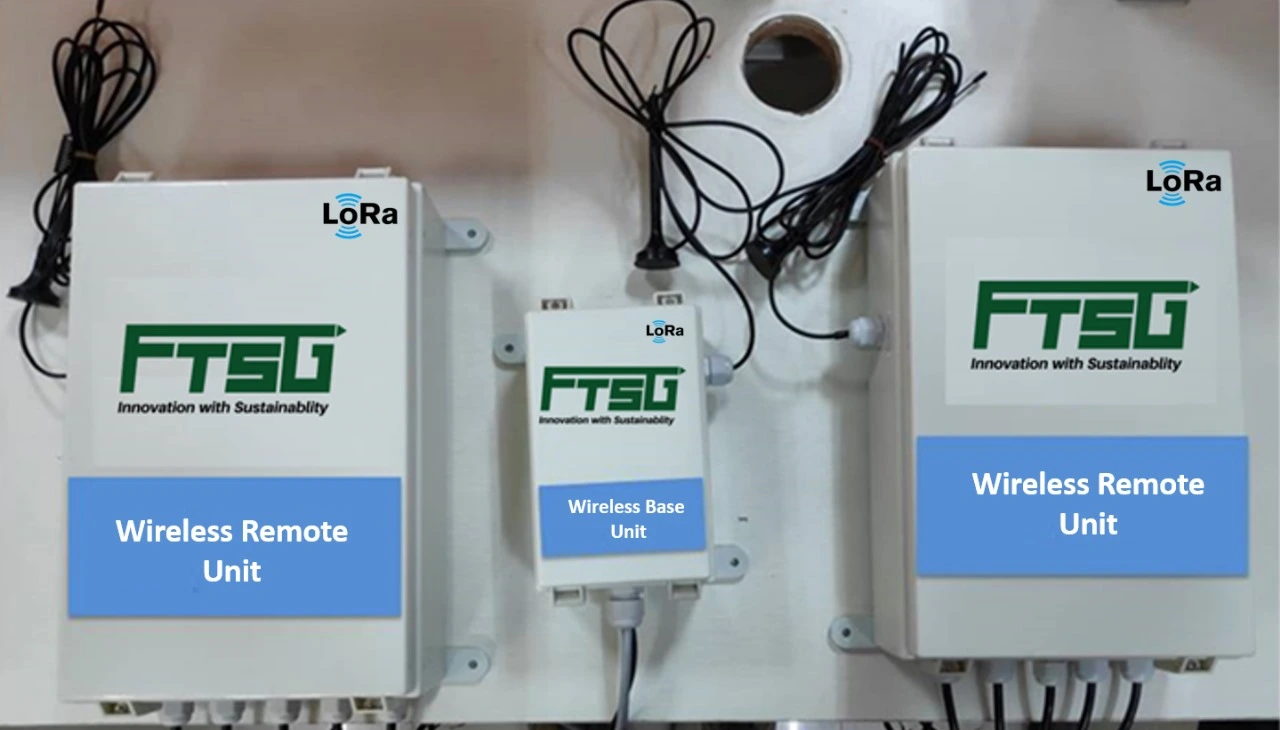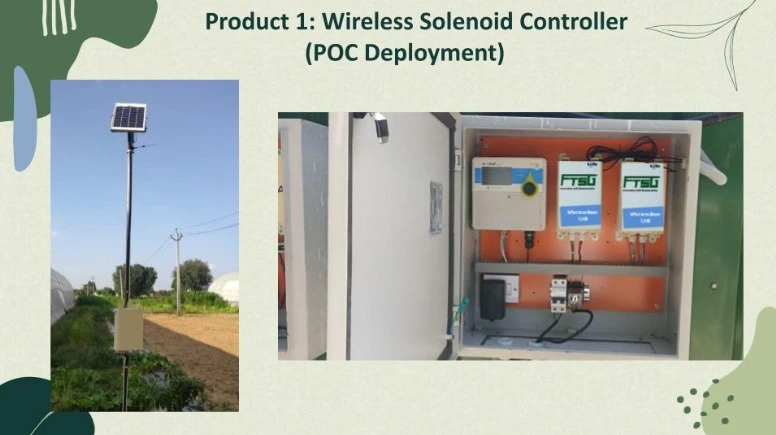Wireless solenoid controller

Specification:
- Utilizes LoRa technology for extended communication range.
- Boasts an impressive 3KM wireless reach.
- Experiences minimal signal loss with no Line of Sight (LOS) requirement.
- Easily connects to any irrigation controller.
- Powered by solar energy with a robust 6-day battery backup.
- Each remote node can seamlessly connect up to 4 valves.
- A single Base Unit accommodates 12 inputs, allowing 1 base unit and up to 3 remote units to work harmoniously together.
- Effortless to set up with no software configuration required.
- Employs 12V latch-type solenoid control for enhanced battery life.
Benefits of a Wireless Solenoid Controller:
- Enhanced Convenience:
Offers the convenience of wireless control, eliminating the need for complex wiring setups. - Flexibility in Placement:
Allows for flexible placement of solenoid valves without constraints imposed by wired connections. - Simplified Installation:
Streamlines the installation process, reducing the time and effort required for setup. - Remote Accessibility:
Enables remote access and control, providing the ability to manage irrigation systems from a distance. - Scalability: Easily scalable to accommodate additional valves or expand the irrigation system without the hassle of extensive rewiring.
- Reduced Maintenance:
Minimizes maintenance efforts by eliminating the risk of damaged wires or connectors associated with traditional wired systems. - Energy Efficiency:
Enhances energy efficiency by employing wireless communication protocols, optimizing power consumption. - Adaptability to Various Controllers:
Compatible with a variety of irrigation controllers, offering versatility in system integration. - Increased Automation:
Facilitates automation of irrigation processes, ensuring precise and timely control over water distribution. - Improved Reliability:
Enhances system reliability by reducing the likelihood of wiring-related issues and disruptions.
Applications of Wireless Solenoid Controller
Irrigation Systems:
Valve Control: Wireless solenoid controllers can be used to remotely control irrigation valves, allowing farmers to manage water flow and distribution across the fields without the need for manual intervention.
Precision Irrigation: By integrating sensors and data analytics, farmers can use wireless solenoid controllers to implement precision irrigation, delivering the right amount of water to specific areas based on real-time moisture levels and crop needs.
Fertilization Systems:
Automated Fertilizer Application: Wireless solenoid controllers can be employed to control valves in fertilizer distribution systems. This enables automated and precise application of fertilizers, reducing wastage and optimizing nutrient delivery based on crop requirements.
Greenhouse Automation:
Ventilation and Cooling: Wireless solenoid controllers can be used to regulate vents, fans, and cooling systems in greenhouses. This automation ensures optimal temperature and humidity levels for crop growth without manual adjustments.
Pest Control:
Automated Spraying Systems: Solenoid controllers can be integrated into pesticide spraying systems. By remotely controlling the solenoids, farmers can automate the application of pesticides at specific intervals or in response to pest detection, minimizing the impact on non-target areas.
Livestock Management:
Water Supply Control: In livestock farming, wireless solenoid controllers can regulate water supply to troughs and automated drinking systems, ensuring a continuous and controlled water source for animals.
Feeding Systems: Solenoid controllers can be used in automated feeding systems, controlling the release of feed at scheduled times, promoting efficient feeding practices.
Remote Monitoring and Control:
Status Monitoring: Wireless solenoid controllers can provide real-time status updates on the equipment they control. Farmers can remotely monitor the status of irrigation valves, pumps, and other components.
Mobile Control: Using mobile applications, farmers can have on-the-go control and monitoring capabilities, allowing them to make adjustments or address issues without being physically present on the farm.
Energy Conservation:
Power Management: Wireless solenoid controllers can be integrated with energy-efficient systems, allowing farmers to schedule and control the operation of pumps, heaters, and other energy-consuming devices to optimize energy usage.
Deployment Image

